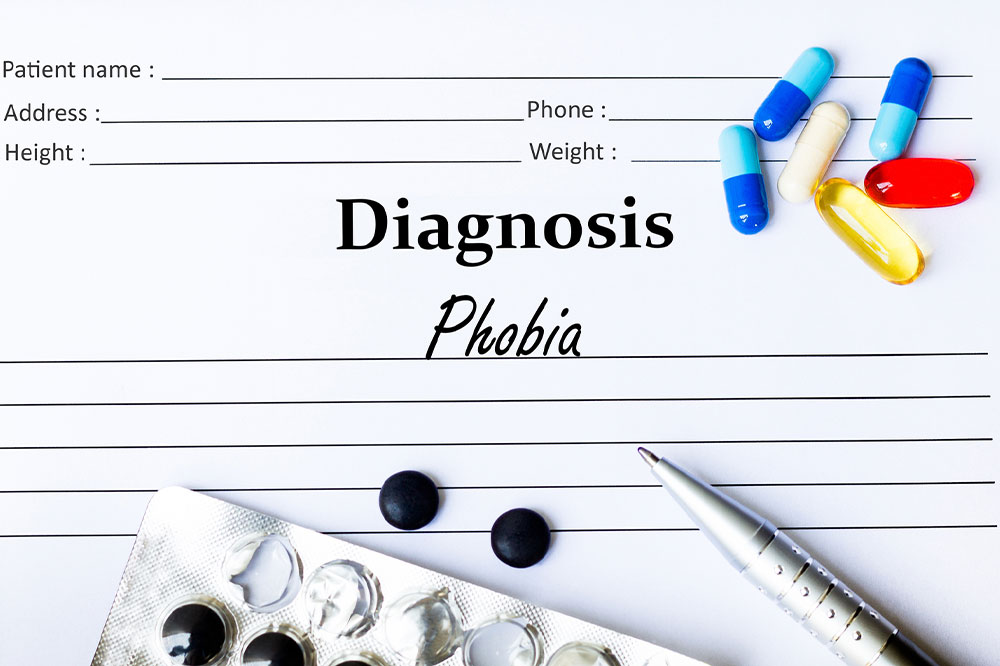
Understanding phobias and their types
Phobias are characterized by intense and irrational fears of certain objects, situations, or activities. They are uncontrollable and can develop at any stage of one’s life. This article talks about phobias, their types, the various methods used for phobia testing, and the accompanying signs and symptoms. Whether you have a scientific interest in phobias or are seeking guidance to tackle the issue, it is vital to understand the condition and all its aspects.
Understanding phobias
Phobias are classified as anxiety disorders characterized by an individual’s heightened, excessive, and enduring fear of a particular object, situation, or activity. When confronted with the particular stimulus, individuals suffering from phobias encounter overwhelming feelings of anxiety, frequently resulting in avoidance behaviors.
Common types of phobias:
Let’s explore some of the most common types of phobias:
Acrophobia
Acrophobia, the fear of heights, is a prevalent phobia that can cause extreme distress to people when exposed to tall buildings, bridges, or high-altitude locations. People with acrophobia may experience vertigo, rapid heartbeat, and a strong urge to avoid elevated places.
Arachnophobia
Arachnophobia is the fear of spiders, often triggered by their appearance, movement, or the possibility of being bitten. Individuals with arachnophobia may feel intense anxiety, panic, or disgust when encountering spiders, even if they pose no real threat.
Claustrophobia
Claustrophobia is defined as an intense fear or anxiety triggered by enclosed spaces. Individuals who suffer from claustrophobia often experience feelings of distress or panic when confined in small rooms, elevators, or crowded areas. The underlying fear revolves around the notion of being trapped or unable to escape, which is a prominent feature of this specific phobia.
Agoraphobia
Agoraphobia, characterized by the fear of situations or places that may trigger panic, embarrassment, or the feeling of being trapped, is a debilitating condition. This psychological disorder compels individuals to avoid public spaces, crowded areas, and scenarios where they anticipate having a panic attack or losing control over their emotions and actions.
Aviophobia
Aviophobia, commonly referred to as the fear of flying, affects a significant number of individuals. It can cause considerable distress and anxiety when boarding an airplane or even thinking about air travel.
Phobia test: Assessing your fears
If you suspect you might have a phobia or are curious about your fears, you can take a phobia test to gain insights into your specific anxieties. Phobia tests typically involve a series of questions designed to assess your fears and responses to certain stimuli. Online resources and mental health professionals often provide these tests.
Signs and symptoms of phobias
Phobias can manifest in various ways, affecting both physical and emotional well-being. The signs and symptoms of phobias may include:
Intense fear or anxiety when exposed to the feared object or situation.
Rapid heartbeat, shortness of breath, or chest tightness.
Trembling or shaking.
Sweating or chills.
Nausea or dizziness.
Feeling a loss of control or impending doom.
Panic attacks or heightened anxiety.
Phobias represent formidable anxiety disorders that possess the ability to greatly affect an individual’s daily existence. It is crucial to remember that you are never alone in facing these challenges, and rest assured that there exist efficacious treatments to aid you in reclaiming command over your life.




